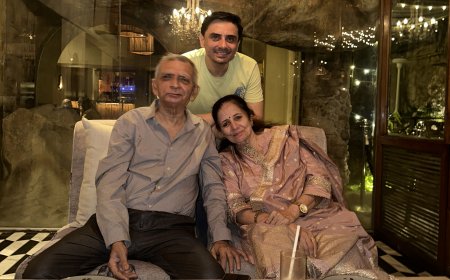Monkeys invade Bengaluru Localities amid Water Crisis
The wild simian creatures are venturing into residential areas of Bengaluru in search of water, while humans themselves are grappling with the ongoing water shortage.

Barely three weeks into Summer and Bengaluru – the capital of the southern Indian state of Karnataka - is also ready feeling the heat... in more ways than one. With soaring local temperature, relentless urban development and the drying up of water sources, city residents and authorities are in quandary. With the lack of the precious commodity flowing through taps in houses, people are actually flocking to nearby malls to access fountains and toilets. Another resort is tank trucks.

Monkey Business Aplenty
And it’s not just human beings who are suffering from the ongoing disaster. Phones of the municipal body -Bruhut Bengaluru Mahanagar Palika or BBMP - have been ringing with complaints of monkeys descending on domiciles in search of water and food. The simians have upped the ante against people due to the former’s verdant abodes being encroached upon by pervasive urban construction.

Human-Animal Conflict
Such is the claim by Mr. Ravindra Kumar N, Deputy Conservator of Forests, who adds that the animal’s natural habitat has been robbed from them. The situation is so bad, that there have been reports of monkeys scaling as high as 15 storeys to pillage kitchens. Bungalows of course, present much easier and hence commonplace access to the tailed invaders. As far back as 2022, the Karnataka High Court had directed the BBMP to address the money menace. Even though the latter has established a helpline (1526), little change has occurred.

Pervasive Parchment in Bengaluru
According to the Bangalore Water Supply and Sewerage Board (BWSSB), a staggering 257 localities in the Garden City are reeling from the present water crises. In Bengaluru’s populous South Zone, also known as the “Kannadiga Heartland”, the scathed areas include HSR Layout, Bommanahalli, Hoskerehalli, Chikkapete and Yelachenahali.
A society notice at a residential building in Bangalore
Some residents say they receive water supply for about 30-45 minutes in the mornings and evenings. Water tankers
are just as hard to come by. "We aren't able to get water tankers even after paying as much as 10,000 per tanker," complained
a Bangalore resident on condition of anonymity.
In the city's north, localities affected are DJ Halli and Vaialikaval, while the East Zone’s Marathahalli, KR Puram and Ramamurthynagar are parched. It’s a similar story in West Bengaluru’s Rajajinagar, Peenya, Bagalgunte and Bapujinahar.

Water Supply Authorities Not Too Perturbed
Rather than addressing the clear and present danger head on, the Bangalore Water Supply and Sewerage Board (BWSSB) is downplaying the ongoing issue. So much so, that the Board Chairman Prashanth Manohar stated to the news channel NDTV, “Despite the ongoing challenges, the water requirement for the next five months is estimated at 8,000 million cubic feet and the city has an adequate water supply to meet these needs.”

What Should be Done
However, informed sources have stated that Bengaluru doesn’t have a “water-supply problem” as much as a “water-supply management problem”. The reviving of depleted reservoirs and tanks and the growth of more trees amid relentless concretisation is the only way to coerce desperate monkeys into lifting their siege on residential areas. Finding ways for more "fluid" water supply is the only way to end the crisis. It’s high time modern Bengaluru authorities take a leaf out of the book of the ancient Romans and build more aqua ducts. Lessons can and should be learned from history!












































